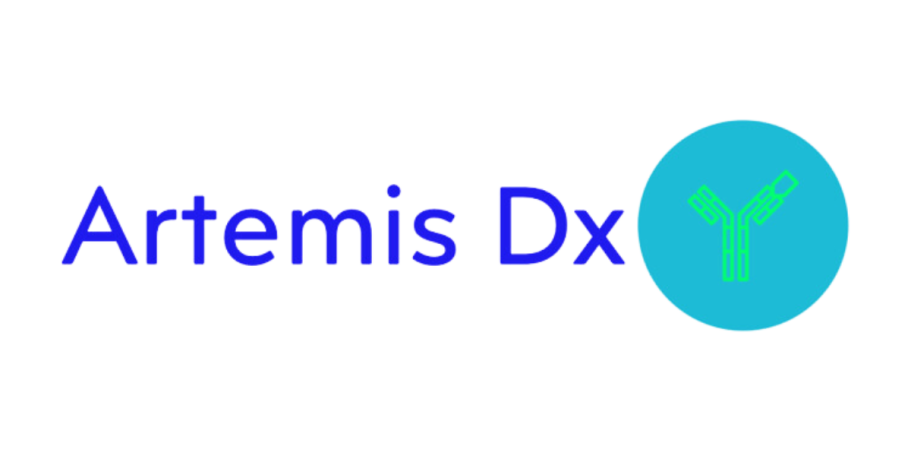The Use of Surfactants in Lateral Flow Assays Part II: Application of Surfactants - Benefits and Challenges
Hans Boehringer, Ph.D., Co-Founder & CSO, Artemis Dx
The Use of Surfactants to Treat Hydrophobic Materials and to Dry Conjugate Particles in Lateral Flow Assays
Surfactants are indispensable in LFAs not only for their roles in enhancing flow dynamics, reagent stability, and signal detection but also in addressing the challenges posed by hydrophobic materials such as polyester and glass-fiber conjugate pads. Additionally, surfactants are critical in the preparation of dried conjugate particles, which serve as the detection labels in LFAs. This section covers how surfactants facilitate treatment of hydrophobic materials and optimize the drying process for conjugate particles.
Treatment of Hydrophobic Materials in Lateral Flow Assays
Conjugate pads and nitrocellulose membranes, both integral to LFAs, often exhibit hydrophobic characteristics that can hinder assay performance. Conjugate pads, in particular, are responsible for storing and delivering detection labels, such as gold nanoparticles or latex beads, to the sample during the assay. The hydrophobicity of these materials can impede reagent mobility and interaction, leading to uneven distribution or inefficient release of dried reagents.
Role of Surfactants in Hydrophobic Material Treatment
- Improving Wettability: Surfactants modify the surface tension of hydrophobic materials, increasing their wettability. This facilitates the uniform application and integration of reagents onto the conjugate pad during manufacturing and ensures consistent release during the assay. For example, nonionic surfactants like Tween 20 are frequently used to pre-treat conjugate pads, creating a hydrophilic surface layer that promotes reagent dispersion.
- Enhancing Reagent Loading: Hydrophobic materials can sometimes repel aqueous solutions containing detection labels or biomolecules. Surfactants help overcome this challenge by stabilizing the reagents in suspension and ensuring even coating on the conjugate pad. This prevents aggregation or clumping of particles and enhances the bioactivity of the stored reagents.
- Minimizing Protein Adsorption: Without treatment, proteins or antibodies may absorb nonspecifically to the hydrophobic surfaces of conjugate pads. Surfactants coat these surfaces, preventing unwanted adsorption and preserving the activity of biomolecules.
- Facilitating Uniform Flow: During the assay, surfactants reduce the variability in capillary flow caused by inconsistencies in material hydrophobicity. This ensures that reagents flow predictably and interact with the target analyte uniformly, improving assay reproducibility.
Key Functions of Surfactants in Drying Conjugate Particles
- Stabilizing Conjugate Particles During Drying: Drying can induce stress on conjugate particles, causing aggregation or the denaturation of biomolecules, such as antibodies, bound to the particles. Surfactants act as stabilizers, preserving the structural integrity of both the particles and the biomolecules. For instance, nonionic surfactants like Tween 20 or Triton X-100 prevent aggregation by providing a protective coating around the particles during water evaporation. This can be further enhanced with the addition of sugars to the drying mixture.
- Preventing Protein Denaturation: Biomolecules immobilized on conjugate particles are sensitive to drying-induced conformational changes. Surfactants in conjunction with sugars help maintain their native structure by minimizing hydrophobic interactions and surface tension changes during the drying process. This ensures that the antibodies or other biomolecules retain their binding activity.
- Enhancing Rehydration Efficiency: Once dried, conjugate particles must rehydrate rapidly and uniformly during assay operation. Surfactants embedded in the dried matrix in addition to sugars facilitate water uptake by reducing surface tension, ensuring that the reagents are rehydrated quickly and evenly. This prevents delays in assay reactions and ensures consistent performance.
- Improving Dispersion in Complex Matrices: Conjugate particles often need to interact with analytes in complex sample matrices, such as blood, urine, or food extracts. Surfactants stabilize the particles, preventing them from clumping in these matrices and ensuring uniform interaction with the analyte.
Optimizing Surfactant Concentration for Drying
The concentration of surfactants used in drying conjugated particles is critical. Insufficient surfactant levels may fail to prevent aggregation, while excessive levels can disrupt biomolecule activity or interfere with downstream interactions. Empirical optimization is necessary to achieve the ideal balance, typically ranging from 0.01% to 0.5% (w/v) for nonionic surfactants.
Interplay Between Conjugate Pad Treatment and Conjugate Particle Drying
The effectiveness of LFAs depends on the synergy between surfactant-treated conjugate pads and properly dried conjugate particles. In addition to sugars, surfactants used to treat the conjugate pad ensure smooth release and flow of the rehydrated conjugates, while those employed during the drying process maintain particle stability and functionality. This dual application of surfactants enhances the overall performance of the assay by ensuring consistent reagent delivery and interaction.
Impact on Assay Performance in Lateral Flow assays
The inclusion of surfactants in LFAs significantly impacts their analytical performance:
- Sensitivity: By stabilizing biomolecules and promoting efficient analyte-reagent interactions, surfactants can enhance the signal intensity and reduce the limit of detection (LOD). For example, the use of Tween 20 in conjugate buffers has been shown to increase the stability of gold nanoparticles, leading to stronger and more consistent test line signals.
- Specificity: Surfactants reduce nonspecific binding, which is critical for distinguishing true positive from false positive results. This is particularly important in complex samples, such as blood or saliva, where matrix effects and a wide range of interfering substances may be present.
- Reproducibility: By ensuring consistent flow and biomolecule stability, surfactants contribute to the reproducibility of LFA results across different batches and operating conditions.
- Speed: The reduction of surface tension by surfactants facilitates faster capillary flow, reducing the overall assay time. This is particularly valuable in point-of-care settings where rapid results are essential.
Challenges and Considerations
While surfactants offer numerous benefits, their use in LFAs is not without challenges. Excessive concentrations can lead to adverse effects, such as protein denaturation, inhibition of antigen-antibody binding, or disruption of the capillary flow. Additionally, the choice of surfactant must be tailored to the specific assay and target analyte, as different surfactants can interact differently with the membrane and reagents.
Another consideration is the compatibility of surfactants with the sample matrix. For example, certain surfactants may interfere with the detection of hydrophobic analytes or react with components in complex biological samples. Therefore, optimizing surfactant type and concentration is a critical step in LFA development.
Future Directions in Surfactant Applications
- Development of Custom Surfactants: Research into surfactants specifically tailored for LFA applications is growing. These surfactants aim to address the unique challenges posed by drying and hydrophobic materials while enhancing biocompatibility and stability.
- Biodegradable and Sustainable Alternatives: To meet environmental and regulatory demands including the REACH regulations, biodegradable surfactants are being developed for use in both conjugate particle preparation and material treatment. These alternatives reduce environmental impact while maintaining assay performance.
- Integration with Advanced Materials: Advances in hydrophilic coatings and functionalized membranes may complement surfactant use, further improving the treatment of hydrophobic materials and reagent stability.
Conclusions
Surfactants are indispensable components of lateral flow assays, playing multiple roles in enhancing assay performance. By optimizing flow properties, preventing nonspecific binding, stabilizing biomolecules, and improving reagent dispersion, surfactants contribute to the sensitivity, specificity, and reproducibility of LFAs. However, effective use requires careful consideration of their chemical properties, interactions with other assay components, and the specific requirements of the target analyte and sample matrix.
As LFA technology continues to evolve, the role of surfactants will likely expand, with innovations in surfactant chemistry paving the way for more robust, versatile, and environmentally friendly diagnostic tools. By leveraging the unique properties of surfactants, researchers and developers can continue to improve the performance and accessibility of LFAs, ensuring their relevance in a wide range of diagnostic applications.
At Artemis Dx we are committed to supporting your efforts in evaluating, optimizing and incorporating surfactants in your assay development programs to improve the performance of your test. Let us know how we can help you.
Contact us at: hans.boehringer@artemisdx.com or info@artemisdx.com
We need your consent to load the translations
We use a third-party service to translate the website content that may collect data about your activity. Please review the details in the privacy policy and accept the service to view the translations.

